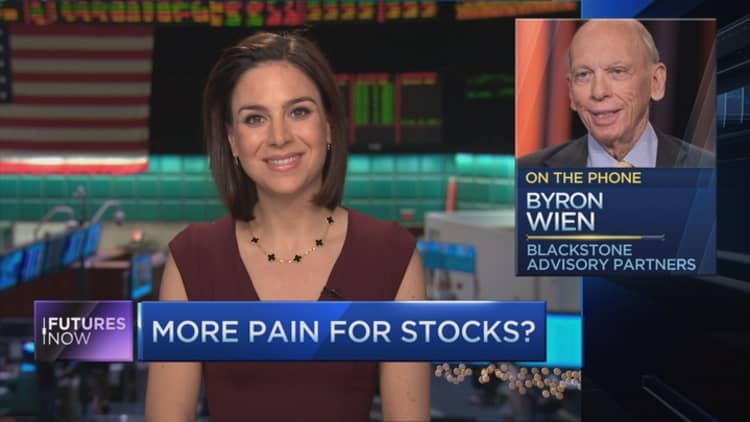


Wall Street is breathing a sigh of relief as the S&P 500 has rallied nearly 5 percent from its recent low. But before investors put more money on the table, one widely followed market watcher said to "buckle up" for more volatility.
On CNBC's "Futures Now" Tuesday, Byron Wien said that while he doesn't expect another steep decline in the large cap S&P 500, he does see more downside ahead.
"I'm not looking for a bear market. We have further to go, but I don't think it's going to be a major downshift from present levels," said the vice chairman of Blackstone Advisory Partners. A bear market is loosely defined by a 20 percent or more decline from a recent high. The S&P 500 is currently 11 percent from its May 2015 peak. "I don't think we've seen the ultimate lows," he added.
Read More Tom Lee: Why stocks will enjoy 'nice' reversal
For Wien, the market will continue to come under pressure as the earnings picture deteriorates and the oil market remains unstable. Many of the gains and losses in the equity market this year have been a result of sharp moves in the oil market.
"Oil has been the key factor [this year]," he said. "If you want the stock market to prove me wrong and continue to rally from here, you really need oil to stabilize and move up."
Wien noted that the correlation between oil and stocks did come as a bit of a surprise, as many thought the decline in oil prices would benefit the consumer and therefore boost stocks. "We did think originally that a decline in the price of oil was favorable, but now I think a rise in the price of oil indicating the whole system would be stable is the most bullish thing that could happen."
Ultimately, Wien expects the S&P 500 to close the year negative by approximately 5 to 10 percent. The index is currently trading around 1895, more than 7 percent lower than where it started 2016.
"My view is that there's still bad news out there. … We're going to reach a bottom somewhere in the first half," he added.



